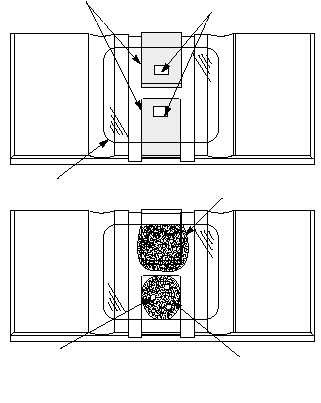Count the fields in this order. To count the cells
in each field, start in the upper left small square
and follow the pattern indicated by the arrow in
field 1 of figure 7-16. Count all of the cells
within each square, including cells touching the
lines at the top and on the left. Do not count any
cells that touch the lines on the right or at the
bottom.
13. Total the number of cells counted in all five
fields and multiply by 10,000 to arrive at the
number of red cells per cubic millimeter of
blood.
NOTE: The number of cells counted in each
field should not vary by more than 20.
A
g r e a t e r v a r i a t i o n m a y i n d i c a t e p o o r
distribution of the cells in the fluid, resulting in
an inaccurate count. If this happens, the test
must be repeated.
HEMOGLOBIN DETERMINATION
A routine test performed on practically every
patient is the hemoglobin determination. Hemoglobin
determination, or hemoglobinometry, is the
measurement of the concentration of hemoglobin in
the blood. Hemoglobin’s main function in the body is
to carry oxygen from the lungs to the tissues and to
assist in transporting carbon dioxide from the tissues to
the lungs. The formation of hemoglobin takes place in
the developing red cells located in bone marrow.
Hemoglobin values are affected by age, sex,
pregnancy, disease, and altitude. During pregnancy,
gains in body fluids cause the red cells to become less
concentrated, causing the red cell count to fall. Since
hemoglobin is contained in red cells, the hemoglobin
concentration also falls. Disease may also affect the
values of hemoglobin. For example, iron deficiency
anemia may drop hemoglobin values from a normal
value of 14 grams per 100 milliliters to 7 grams per 100
milliliters.
Above-normal hemoglobin values may
occur when dehydration develops. Changes in altitude
affect the oxygen content of the air and, therefore, also
affect hemoglobin values. At higher altitudes there is
less oxygen in the air, resulting in an increase in red cell
counts and hemoglobin values.
At lower altitudes
there is more oxygen, resulting in a decrease in red cell
counts and hemoglobin values.
7-14
COVER
GLASS
COUNTING
CHAMBERS
PROPERLY
LOADED
A
HM3f0714
FLOODED
AIR
BUBBLES
UNDER-
LOADED
B
Figure 7-14.—Loading hemacytometer: A. Hemacytometer
properly loaded; B. Hemacytometer improperly loaded.
Example: Total number of cells counted = 423.
Multiply:
423 x 10,000
= 4,230,000
Total red cell count
= 4,2300,000 cells/mm3
HM3f0715
Figure 7-15—Loaded hemacytometer placed inside petri dish.



